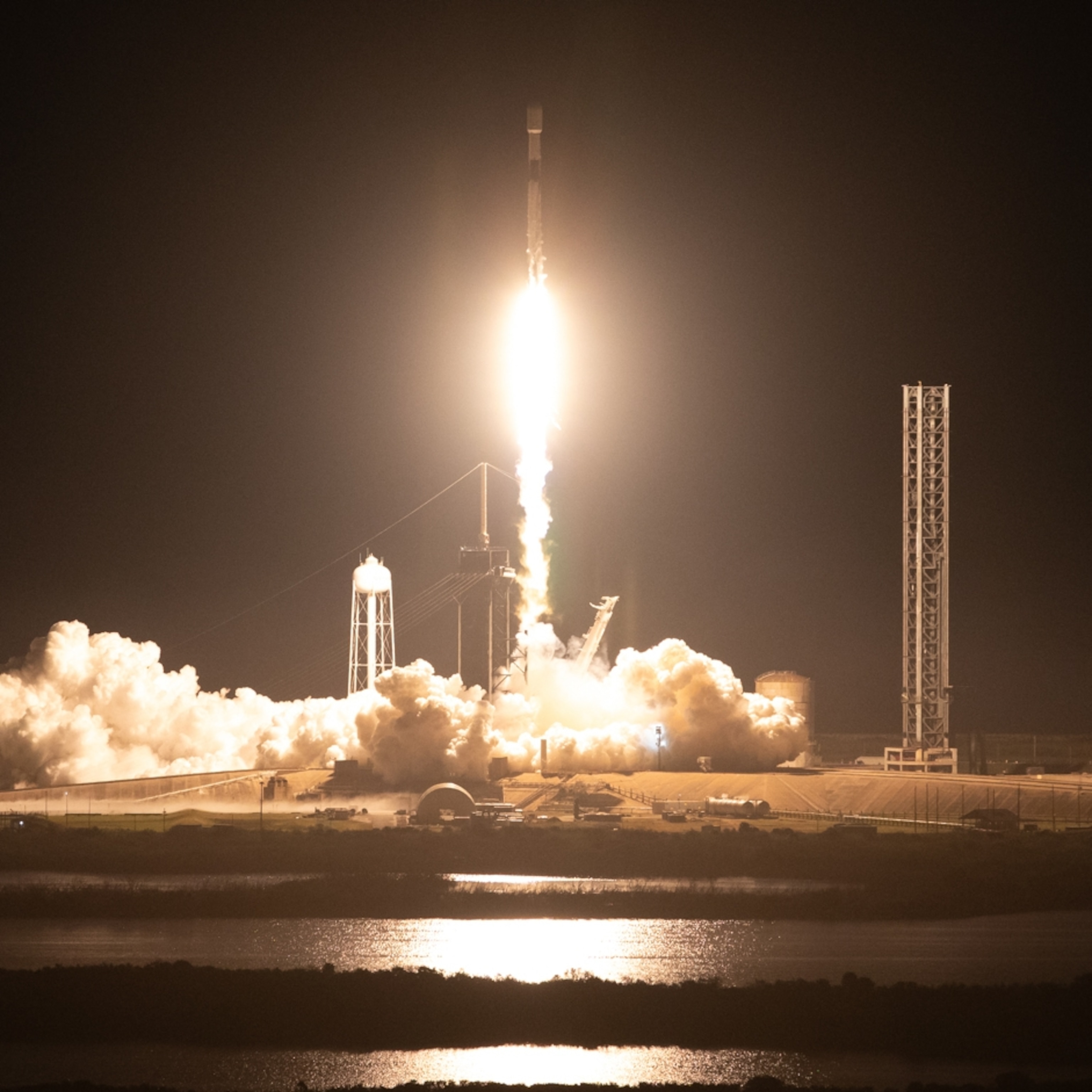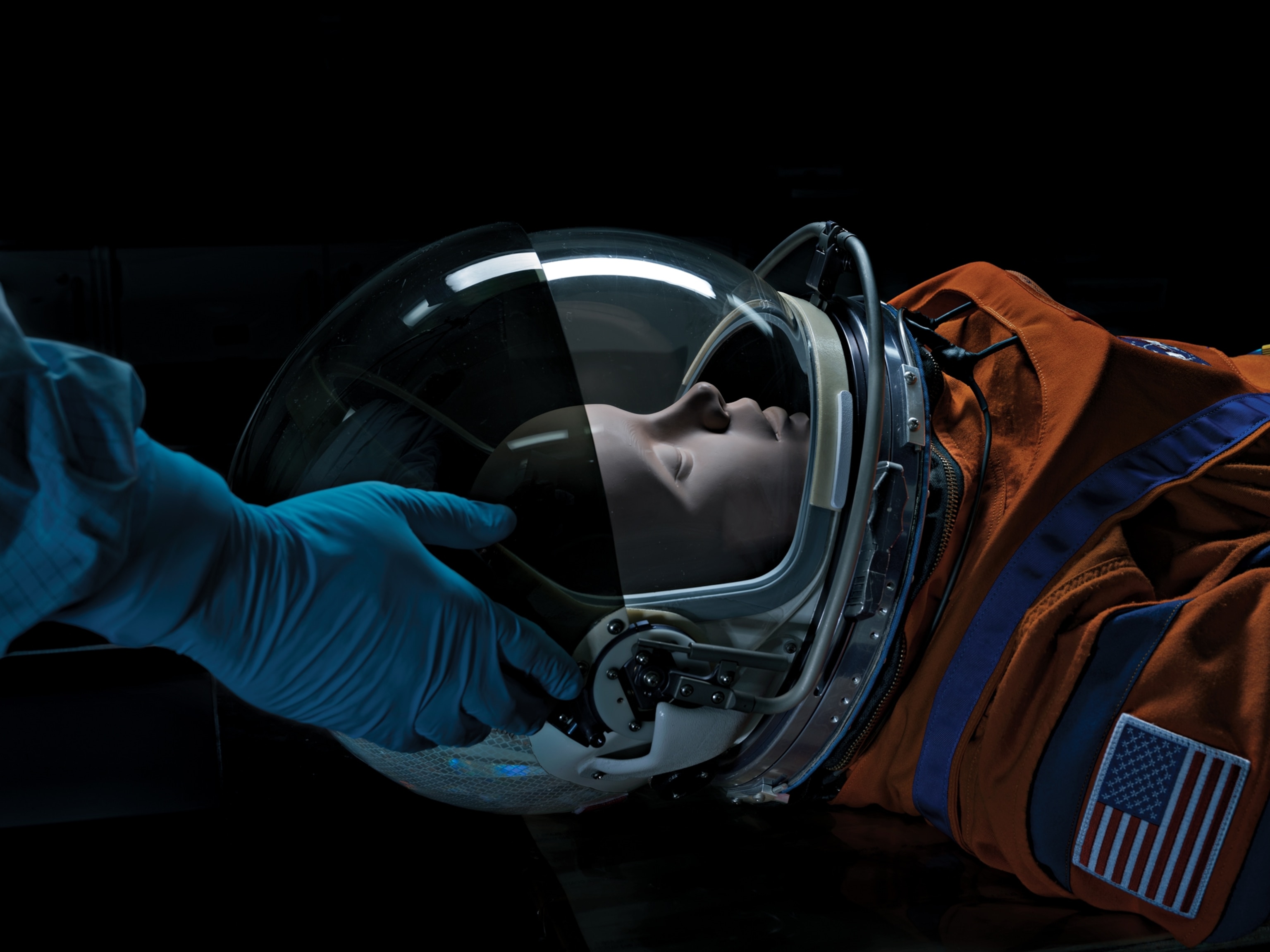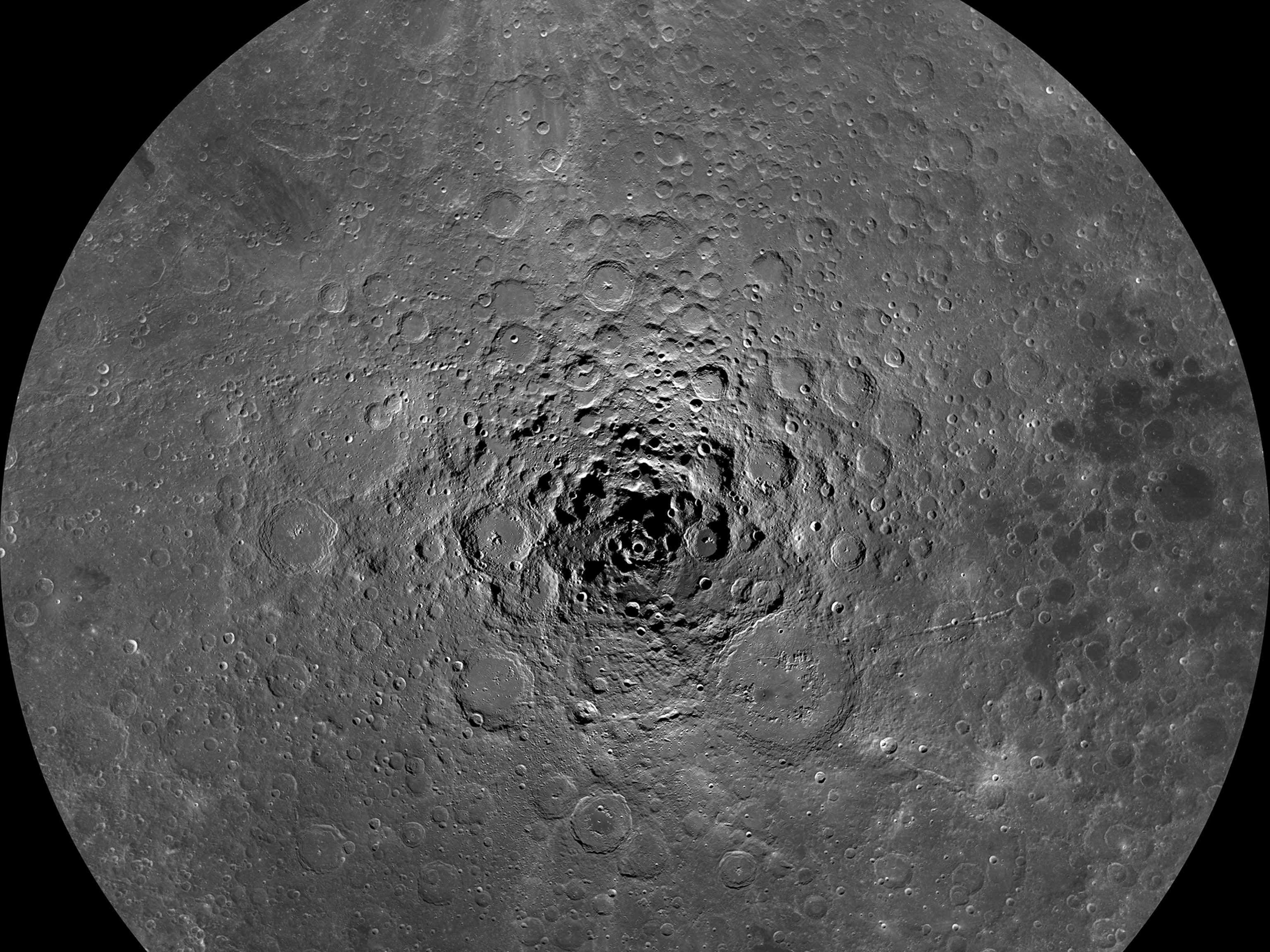
NASA selects SpaceX to put astronauts back on the moon
The space agency announced today that it has awarded SpaceX a $2.9 billion contract to develop a version of the Starship rocket that can land people on the moon.
In a key milestone for NASA’s plan to return humans to the moon, the space agency today announced that SpaceX will build the vehicle that will land astronauts on the lunar surface. The current plan, known as Artemis, calls for astronauts to launch on NASA’s Space Launch System (SLS) rocket, fly to lunar orbit on the space agency’s Orion space capsule, and then transfer to SpaceX’s Starship rocket to make the final descent to the surface.
The contract, worth $2.9 billion, will go toward developing a moon-ready version of the Starship rocket. The futuristic-looking vehicle is still in the prototype stage, with testing ongoing at a Texas facility. SpaceX beat out proposals from Jeff Bezos’ company Blue Origin—which has been working with defense contractors Lockheed Martin, Northrop Grumman, and Draper—and Dynetics, a defense contractor based in Huntsville, Alabama.
Here’s everything you need to know about NASA’s ambitious Artemis mission and how SpaceX will play a key role.
What is NASA’s Artemis program?
Announced in 2017 under the Trump administration and named in 2019, the Artemis program aims to return U.S. astronauts to the lunar surface for the first time since the Apollo 17 mission in 1972, including landing the first woman and the first person of color on the moon.
The Biden administration has voiced support for the program, as well. But while Trump’s team pushed for a crewed mission to the moon’s surface in 2024, Congress has not provided the amount of funding for the program that NASA says would be needed for that time table. Due to a smaller budget than requested, and delays during the development of the SLS rocket and other parts of the program, NASA is reevaluating the soonest date that it could launch people on a lunar mission.
The Artemis I mission, which will launch no sooner than late 2021, will be an uncrewed test flight of Orion and SLS. Artemis II will follow, using SLS and Orion to fly a crew around the moon and back but not land, similar to 1968’s Apollo 8 mission. Then Artemis III will use SLS, Orion, and SpaceX’s Starship to complete the journey to the moon’s surface.
To fly the quarter-million miles to the moon, astronauts will travel on NASA’s SLS heavy-lift rocket and Orion deep-space spacecraft. The plan then calls for Orion to dock with a Human Landing System (HLS)—which is what NASA selected SpaceX’s Starship for. This spacecraft will wait in lunar orbit up to a hundred days before the astronauts arrive and then land them on the surface. To return to Earth, the crew will launch off the moon on Starship, transfer back to the waiting Orion spacecraft, and fly home.
What is SpaceX’s Starship?
Starship is a heavy-lift rocket that is currently being developed by SpaceX. The full rocket will consist of two pieces: a 230-foot-tall booster called Super Heavy, and a 165-foot-tall upper stage called Starship. (Together, the booster and upper stage of the rocket are also known as Starship). In a departure from past launch vehicles, the goal is to build a rocket that can launch and land itself. The company’s Falcon 9 rocket, which NASA uses to take astronauts to the International Space Station (ISS), has a booster stage that can achieve this feat, allowing it to be reused.
During missions to the moon, the Super Heavy booster will help launch Starship off Earth and on its way to lunar orbit, where the upper part of the rocket will wait to ferry astronauts to the surface using its own engines.
Starting in December 2020, SpaceX has launched four prototypes of the Starship rocket on high-altitude flight tests. So far, Starship rockets have flown as high as 41,000 feet, but each of the prototypes exploded during attempted landings. NASA said that its award requires SpaceX to perform an uncrewed demonstration of a lunar landing before shuttling people to the moon.
What other companies were competing to build NASA’s lunar lander?
SpaceX was one of three teams competing to win NASA’s contract, including the team organized by Blue Origin, and the separate design from Dynetics.
Perhaps the single biggest surprise from NASA’s announcement is that, out of three finalists, NASA chose to go with just SpaceX. Typically, NASA selects contractors in pairs so that the space agency has two options for spacecraft in critical missions, and so it can continue with a given program if one of the contractors fails to deliver. NASA’s Commercial Cargo Program, which sends supplies to the ISS, works with both SpaceX and Northrop Grumman, for example, and the space agency’s Commercial Crew Program has contracted with both SpaceX and Boeing.
The move to go with just SpaceX signals NASA’s confidence that the company can build a version of Starship that is capable of landing on the moon. Selecting a single contractor also means that NASA can attempt to get back to the moon on the budget Congress has approved, as SpaceX’s $2.9 billion bid was substantially less expensive than the competing proposals, and the company plans to pay for more than half of Starship’s development costs. But it also means that NASA has no backup option for now.
“It’s unusually bold for [NASA] to commit to a single provider, and particularly one with such a dramatically ambitious spacecraft; Starship is nothing but ambitious,” says Casey Dreier, the chief advocate and space policy adviser with the nonprofit Planetary Society. While Starship will first ferry people to and from the moon, it’s ultimately designed to send people to Mars. That means that as NASA invests in Starship, “they’re also investing second-order in getting humans to Mars,” Dreier says.
NASA is keeping its options open for future Artemis missions. The agency said that the SpaceX contract covered just Artemis III and an earlier uncrewed demonstration mission. For Artemis IV and beyond, NASA plans to let other companies bid on ferrying crews to and from the moon.
How soon could Starship fly to the moon?
In a call with reporters on April 16, NASA officials said that Starship will land U.S. astronauts on the lunar surface no sooner than 2024. NASA stressed that the agency was reviewing the Artemis timeframe and made no firm commitments. “We will not launch until we are ready—we will not launch until all systems are safe,” NASA program manager Lisa Watson-Morgan said during the call.
NASA’s Artemis program isn’t the only lunar mission that SpaceX hopes to launch. In 2018, SpaceX signed an agreement with Japanese fashion billionaire Yusaku Maezawa to send himself and a group of artists around the moon and back. The company hopes to launch that mission, called dearMoon, in 2023.
A mission to the moon is extraordinarily ambitious, however, and setbacks could occur as NASA, SpaceX, and other organizations prepare the hardware needed to safely land humans on the lunar surface. But once astronauts return, NASA hopes that they will live and work on the moon for long periods of time—testing the technologies that will be required to venture on to Mars.
“I think the 2020s are going to be the most exciting decades in space since the Apollo era,” Dreier says, “and this is one of the big reasons why.”








